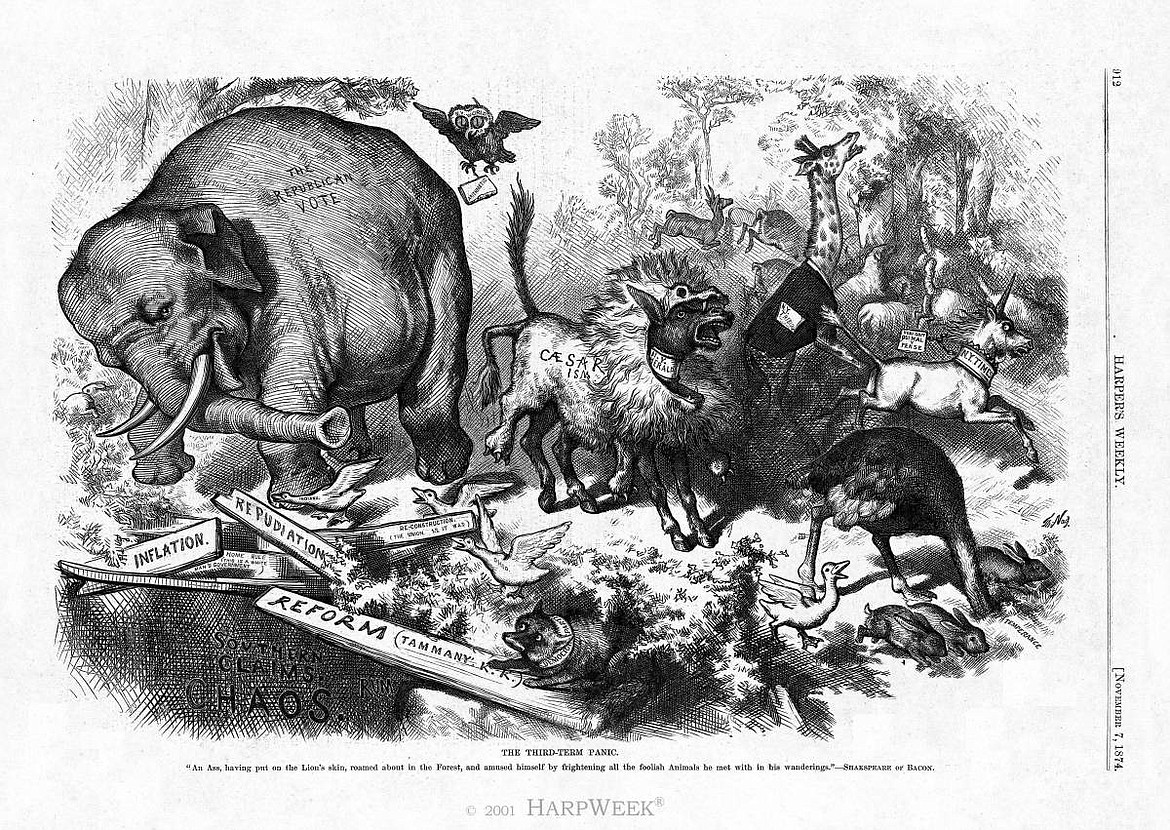Donkey or elephant? They’re both jokes
A clenched fist. A red-clad handmaiden. A flag striped black and blue.
What of themselves may be banal or without particular connotation, when used by groups to symbolize an opinion or position quickly become powerful and evocative. And in some cases, never again inextricable from that symbol.
Which got me wondering in this impassioned election season: How did we get to donkeys and elephants? Real-life characteristics of these two creatures don’t seem to represent their symbolic parties’ platforms and ideals.
Turns out, they weren’t meant to. It’s all a joke.
And you can blame the media.
Nineteenth-century Americans relied on newspapers and news magazines as their primary source of information — even the sizable number of illiterate, who got the message from illustrations. Editorial cartoons exaggerated or satirized on purpose, to convey the gist of an issue or story without words.
German-born Thomas Nast was one such illustrator, who emigrated to New York as a child. Considered the father of modern political cartoons Nast worked for Harper’s Weekly, publishing more than 3,000 drawings between 1862 and 1885 according to the National Museum of American History. His popular illustrations often depicted animals in outrageous situations.
First came the donkey. In the 1820s, as an insult against presidential candidate Andrew Jackson, the Whig (conservative) party referred to him as “A. Jack-ass.” So naturally Nast drew Jackson as a donkey in an editorial cartoon.
Jackson must have had a sense of humor. Taking this in stride, he began to include donkeys on his campaign posters.
It took a few more years for the pachyderm. By the time Lincoln entered national politics and became associated with a war, an elephant had appeared in a political cartoon to symbolize the Republican Party. According to History.com, that’s because when Civil War soldiers faced the prospect of combat some called it “seeing the elephant.”
And again, Nast popularized the association in an 1874 Harper’s Weekly cartoon. “The Third-term Panic” showed a massive elephant labeled “Republican vote” teetering at the edge of a pit, while a donkey clad in a lion costume scared off other critters.
Obviously neither was meant to be flattering.
While both parties initially resisted these symbols, preferring national icons such as the eagle and flag, over time the persistent use of donkeys and elephants gave way. And here we are, with a pachyderm and equine in stride.
Please don’t forget to plan your vote ASAP. Information at Idahovotes.gov.
• • •
Sholeh Patrick is a columnist for the Hagadone News Network. Contact her at Sholeh@cdapress.com.

